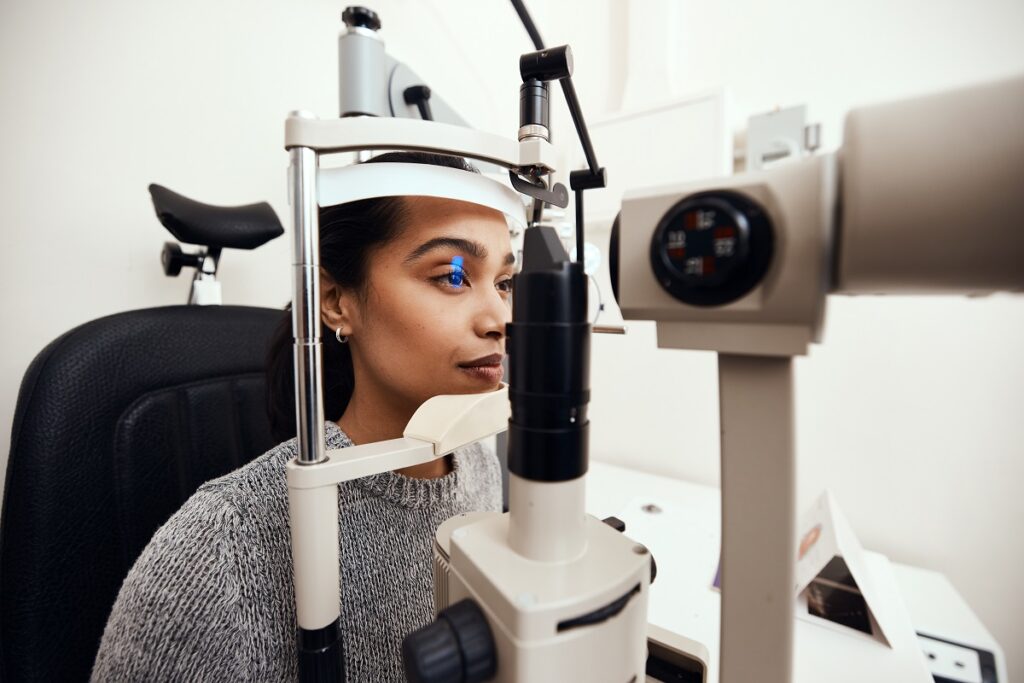Why Picking an Eye Doctor Optometrist is Essential for Your Eyes
Discovering the most up to date Technological Developments in Optometry and What They Mean for Eye Doctors
From the accuracy of Optical Comprehensibility Tomography to the nuanced understandings provided by AI-driven analysis tools, these innovations are establishing brand-new requirements in patient assessment and treatment. As these innovations penetrate the method, optometrists are faced with the challenge of accepting these tools to improve client results.
Developments in Diagnostic Equipment
Advancing the area of optometry, developments in analysis tools have actually changed the method eye treatment professionals examine and diagnose visual problems and ocular problems. The previous years has actually observed substantial technological innovations, allowing even more comprehensive and exact assessments. Optical Coherence Tomography (OCT), as an example, gives high-resolution cross-sectional pictures of the retina, allowing for the very early detection of diseases such as glaucoma and age-related macular deterioration. This non-invasive imaging strategy has actually come to be indispensable in modern optometric practice.
One more secret advancement is the intro of sophisticated corneal topography systems, which map the surface curvature of the cornea with accuracy. These devices are especially advantageous for fitting contact lenses and detecting corneal disorders. Digital retinal imaging has actually transformed conventional ophthalmoscopy, offering comprehensive, breathtaking views of the retina that facilitate thorough visual assessments.
The development of wavefront aberrometry has also been essential, enabling the evaluation of refractive mistakes with unrivaled precision (Opticore Optometry). This technology helps in personalizing rehabilitative lenses and improving medical end results for refractive surgeries. Jointly, these diagnostic innovations equip eye doctors to provide superior person care, guaranteeing very early treatment and tailored therapy methods, ultimately enhancing visual health and wellness end results
AI in Patient Monitoring
Structure on the foundation of cutting-edge diagnostic tools, the consolidation of expert system (AI) in patient administration represents a transformative leap for optometry. AI systems are significantly employed to boost efficiency, accuracy, and personalization in patient treatment. By examining vast quantities of data, AI can identify patterns and predict potential eye conditions, allowing eye doctors to customize treatments better. This capability is vital in handling chronic eye conditions such as glaucoma and diabetic person retinopathy, where early detection and constant surveillance are vital.
Furthermore, AI-driven platforms facilitate streamlined patient interactions and administrative procedures. Automated scheduling, digital consultations, and personalized follow-up plans not just improve patient satisfaction however additionally enhance time monitoring for experts. These systems can triage patients based on the urgency of their conditions, ensuring that those in vital need obtain punctual attention.
In addition, AI enhances decision-making by providing optometrists with evidence-based referrals and treatment paths. By integrating information from digital health records, AI tools use insights that inform medical decisions, reducing the threat of mistakes and enhancing patient results. As AI remains to progress, its function in person management will likely expand, improving the landscape of optometric treatment.
Breakthroughs in Retinal Imaging
In the world of optometry, retinal imaging has seen exceptional technological advancements that are improving analysis capabilities and individual treatment. Developments such as Optical Coherence Tomography (OCT) and fundus digital photography have changed just how eye doctors evaluate the retina and envision.
Improved imaging modalities like OCT angiography are additional refining analysis accuracy. Opticore Optometry. Such advancements help with the identification of min retinal changes that might signify disease development.
Additionally, advancements in expert system are increasing retinal imaging by allowing automated evaluation of large datasets. These systems aid optometrists in identifying patterns a measure of pathology, thereby enhancing analysis precision and performance. Jointly, these innovations are transforming retinal imaging into a cornerstone of contemporary eye treatment, boosting end results and increasing healing possibilities.
Teleoptometry's Expanding Role
Teleoptometry is significantly becoming an essential component of eye treatment, driven by developments in electronic interaction and analysis tools. As optometry embraces electronic transformation, teleoptometry helps with remote consultations, enabling optometrists to expand their services past conventional boundaries. This is particularly beneficial in underserved and rural locations where access to specialized eye treatment is frequently limited. By leveraging high-resolution video conferencing and progressed retinal imaging, eye doctors can conduct thorough eye examinations from afar, guaranteeing timely diagnosis and therapy.
The integration of expert system (AI) further improves teleoptometry, making it possible for the evaluation of aesthetic information and aiding in the discovery of ocular problems such as glaucoma and diabetic retinopathy. AI-powered algorithms can quickly translate complex imaging data, supplying optometrists with useful insights that bolster medical decision-making.
Moreover, teleoptometry supports continuity of care via seamless assimilation with digital wellness records (EHRs), enabling eye doctors to maintain extensive person histories. This makes sure that people get individualized and constant care also when speaking with various professionals.
Regardless of these advantages, obstacles stay, including ensuring information safety and managing client assumptions. Teleoptometry stands for a significant stride towards even more accessible, efficient, and patient-centered eye care. As modern technology evolves, its duty is positioned to broaden even more.

Future Fads in Eye Care
A myriad of innovative patterns is set to reshape the future of eye treatment, driven by technical advancements and the advancing needs of patients. One considerable pattern is the assimilation of expert system (AI) in diagnostics, which assures to enhance the accuracy and effectiveness of eye assessments. AI algorithms can evaluate substantial quantities of information from retinal pictures, potentially discovering problems like diabetic person retinopathy and glaucoma earlier than standard methods.
Additionally, personalized medication is getting traction in optometry, with genetic screening educating customized treatment plans. This method intends to maximize individual results by you can find out more tailoring interventions to private genetic accounts. Wearable modern technology, such as smart contact lenses, is also on the perspective, offering real-time tracking of intraocular stress or sugar degrees, thus offering continual insights right into systemic and ocular health and wellness.
The adoption of enhanced reality (AR) and digital fact (VIRTUAL REALITY) in training and client education is an additional arising pattern. These modern technologies provide immersive experiences that why not try these out can enhance understanding and skills both for patients and eye doctors. As these trends advance, optometrists need to stay abreast of technical developments to offer cutting-edge treatment, making sure better person end results and complete satisfaction in the vibrant landscape of eye care.
Verdict

Jointly, these diagnostic advancements empower eye doctors to deliver premium patient treatment, ensuring early intervention and customized treatment methods, ultimately enhancing visual health results.

As these technologies continue to evolve, eye doctors need to additional resources adapt and integrate them right into practice, eventually maximizing process effectiveness and boosting the requirement of eye treatment supplied to individuals.